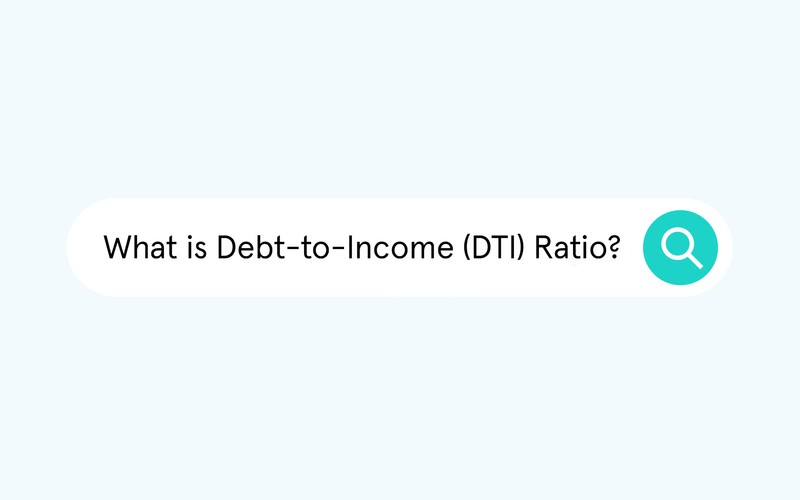Managing your finances and understanding your financial health can be a complex process. Still, as most of us want to live a debt-free lifestyle, we must know where we stand. And if you’re growing your wealth, such as through real estate investing, having a clear picture of your financial status is a must.
One of the most important metrics for understanding your financial status is something called a debt-to-income (DTI) ratio. Understanding your DTI is essential if you plan to buy real estate, as it’s a metric lenders include to determine if you are a financing candidate. DTI ratios allow you to quickly compare how much money you owe each month in personal loans with how much income you make. For your financial health, the lower the DTI ratio, the better.
This article will cover what DTI is, why it’s important, how to calculate it, and tips for improving it.
Why DTI ratios are important
How firm is your financial footing? Can you save or invest each month, or does it feel like the monthly bills have gotten away from you?
The DTI ratio assesses your overall financial health, and if you can afford that big purchase you’re planning to make, whether it’s a new car or a second home. It’s a way to determine whether or not you are financially secure or need to take the necessary steps toward achieving your financial goals.
For homebuyers and real estate investors financing a real estate purchase, lenders use the DTI ratio to gauge your ability to manage monthly payments and repay the loan. The most attractive borrowers are those with enough income to meet their obligations. The last thing lenders want is to start expensive foreclosure proceedings because the borrower can’t afford the payments on their property.
The various loan products have different DTI limits, so this calculation shows what financing you qualify for. Understanding your DTI before you seek a loan saves you time because it narrows down whom you can work with and what financing options best fit the purchase.
How to calculate your DTI ratio
The DTI calculation is relatively simple. To start, add up all your monthly bills to get the total amount you owe to creditors each month. Qualifying debt includes rent payments, auto loans, lines of credit, child support payments, alimony, student loan payments, and monthly credit card payments. They use your required minimum credit card payments if you don’t have outstanding credit card debt. Fluctuating expenses like utilities, taxes, gas, memberships, and groceries aren’t included.
As an example, let’s say your debt obligations are:
- $1300 for monthly mortgage or rent
- $575 for an auto loan
- $300 for a student loan
- $600 for a credit card
The total amount of debt is $2,775.
Divide that number by your monthly gross income, the amount you make before taxes. Let’s say you bring in $7,500 a month. Your debt-to-income ratio is 37%.
A debt-to-income ratio calculator can help crunch the numbers for an accurate DTI assessment.
Generally speaking, a good debt-to-income ratio is considered below 36%. DTI ratios between 36% and 43% are considered fair, and DTI ratios above 44% are considered high and may indicate financial distress. Every mortgage lender will have specific eligibility requirements regarding acceptable DTI ratios, so check with the institution you’re considering using.
How to interpret your DTI ratio
Knowing where your DTI falls can help you make decisions about managing your finances.
DTI ratios below 36% tell the lender that the borrower has a balance between debt and income. You don’t need to improve the debt-to-income ratio to qualify for an attractive loan package. Still, you’re welcome to take any measures you want to improve your financial health.
DTI ratios between 36% and 43% are considered fair but may still indicate some financial strain. Lenders will look closely at why the DTI is higher, such as how much of the debt is servicing a mortgage, car payments, or credit card payments.
DTI ratios above 43% are considered high. They may indicate that the borrower is at risk of not meeting all their financial obligations. If this is the case for you, then it’s important to reduce this percentage as soon as possible.
Why you want a low DTI
What real estate investor or homeowner doesn’t want the lowest rate and most favorable terms? Low DTI ratios can help you qualify for these top-tier loan packages with favorable interest rates. The score is a positive sign to potential lenders considering approving new debt that you have control over your spending.
It also means you have flexibility in your budget. You can handle the additional debt payments without being too financially strained. You likely have income available to save, invest, and spend.
Lenders see a high debt-to-income ratio as a greater risk. Suppose they do decide to approve the loan or credit. In that case, they likely will underwrite higher interest rates, stricter penalties for late payments, and tougher terms. You may be asked for a higher down payment, too.
What lenders look for in DTI
As mentioned, lenders use the debt-to-income ratio to indicate adequate income and good creditworthiness, but there are two kinds of DTI calculations. Borrowers with low back-end ratios are more capable of making their monthly debt payments on time, presenting less risk.
Lenders also run a front-end debt-to-income ratio, which calculates how much of a person’s gross income goes toward housing costs. A lender may reject an application if the mortgage payment, property taxes, HOA fees, and homeowners insurance take up more than 28% of the borrower’s gross income.
When it comes to credit card debt, a lender may consider any payments above 10% of pre-tax earnings too high. Additionally, lenders will look at the total amount owed to the credit company and compare it against the borrower’s monthly income to determine if they can afford to pay their debts on time.
Tips for Improving Your DTI Ratio
If your DTI ratio is above the recommended levels, you can improve it. It boils down to two factors: less debt or more income.
1. Reduce monthly debt payments
The fastest way to change the DTI is by paying off debt, like a student loan or car loan.
Not everyone can make a lump sum payment on an outstanding balance. In that case, you have two strategies for reducing debt:
- Snowball method. Focus on paying off the smallest outstanding balance first. Roll that monthly payment into the next-highest debt. Roll the money into the next highest balance when that is paid off.
- Avalanche method. This is the opposite of the snowball method. Instead of focusing on paying off the smallest balance first, pay off the highest-interest debt first.
Both methods work to reduce the amount of money you owe each month and lower your DTI ratio. Run some calculations to see which method benefits you the fastest.
2. Lower interest to lower debt
Dropping your interest payments can be a tactic to decrease your DTI. For example, monthly credit card payments would decrease if you transferred your credit card balances from a high-interest rate to a low-interest rate credit card. Even though your total debt remains the same, your DTI ratio and total monthly debt payments would decrease.
Debt consolidation is also an option. Consolidating your existing debt can help lower interest payments and make debt repayment more manageable.
You could also refinance your existing loans if they have a high-interest rate. So, if you have a 5% 30-year fixed-rate home loan, refinancing to 4% could reduce your DTI ratio and monthly payments significantly.
3. Increase income
Consider ways to increase your income, such as working a second job, starting a side hustle, or asking for a raise.
4. Practice personal finance habits
Responsible spending habits and budgeting help you track where your money is going and avoid financial stress.
As you prepare for a home loan, it’s in your best interest not to apply for any new credit cards or loans. Even a low-limit credit card can affect your DTI if you start charging items.
Monitor your credit utilization. Around 30% is ideal for keeping your DTI back-end ratio in check.
Debt-to-Income is not the only factor
The DTI ratio is essential but not the only determining factor in a lender’s decision to underwrite a loan. A borrower’s past credit history and score also play a role.
Lenders pull credit reports to see your entire borrowing history and credit score. They’ll verify your current debt amount. The credit report also shows late payments, delinquencies, the number of open credit accounts, and your credit utilization–the balances relative to credit limits across all cards. The FICO credit scores are numeric values assigned to individuals based on the information demonstrated in the report.
Not everything out there uses the DTI ratio. It’s a factor in a mortgage loan, but other types of loans may be satisfied with proof of income and employment paired with a good credit score. If you’re seeking a personal or auto loan and have a low credit score, the lender may see if you have a high DTI ratio before approving a loan.
Final thoughts on DTI
Knowing how much money you owe each month relative to what you make is essential in managing your finances responsibly. High debt has significant implications for long-term financial security and investment potential.
By calculating and understanding your DTI ratio, you can take steps to improve your financial situation, if necessary, and ultimately achieve your financial goals. This is especially true if you’ll be applying for a home mortgage soon. Lenders will use DTI ratios in their screening process. Be prepared before you start seeking financing.
DTI ratio can also help set a budget for your next home. Figure out how much you can spend in monthly payments and still have a reasonable DTI. Investors can run the numbers out to set their budget and then start searching a database for qualifying homes.







